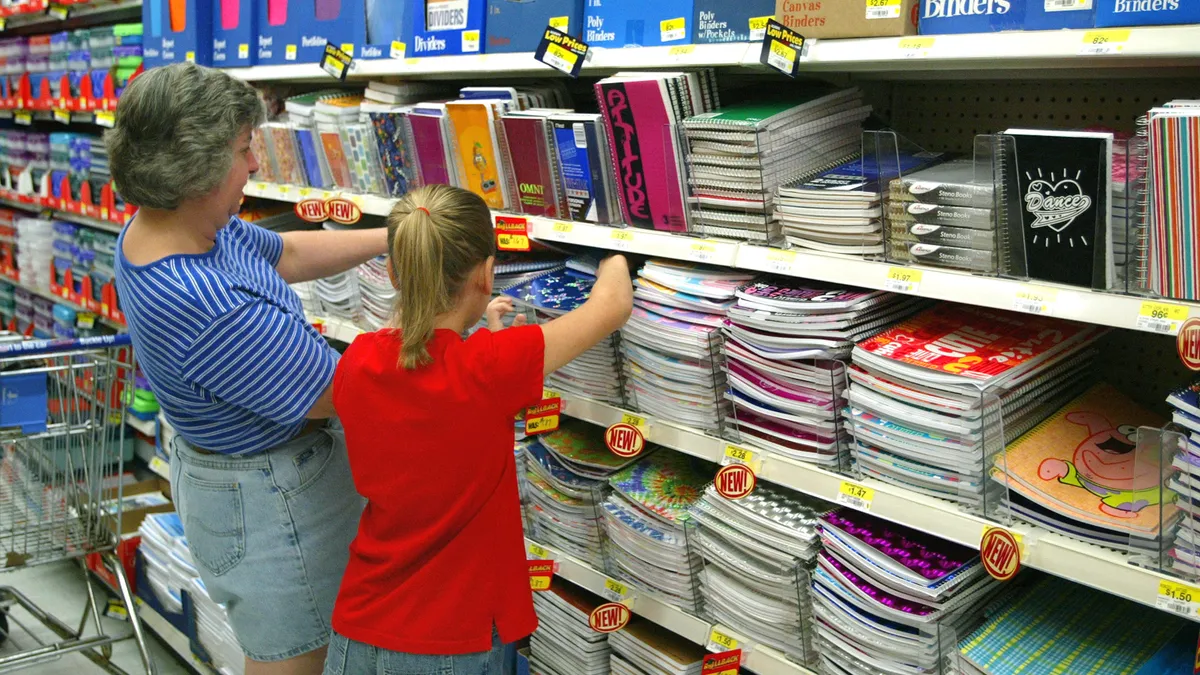Dive Brief:
- Parents plan to spend $586 per child on back-to-school items this year, down $11 from 2023 totals, according to a Deloitte survey of 1,198 parents of school-aged children attending grades K to 12 this fall. Estimated market spend for the year on back-to-school is $31.3 billion, down from last year’s total of $31.9 billion, per the report.
- Low- and middle-income families will spend less on back-to-school supplies for their kids this year than in 2023, down 4% and 9%, respectively, according to the survey.
- With major summer promotional deals underway from such players as Amazon, Walmart, Target and Best Buy, families are shopping earlier with 66% of planned spend by the end of July compared with 59% last year.
Dive Insight:
Families are minimizing their back-to-school spending and looking for early summer savings.
“While value and convenience-seeking parents plan to spend the same or less on back-to-school, more are looking to pull their spending forward even more this year,” Stephen Rogers, managing director of the Deloitte Consumer Industry Center, said in an email. “Retail sales in July should be fairly solid despite the expected overall dip in the back-to-school season.”
The Deloitte survey reflects other reports indicating back-to-school consumers will start buying earlier as major retailers lure them with some of the season’s deepest price promotions. A recent JLL survey found that by late June, a quarter of respondents started their shopping, while a National Retail Federation survey found 85% of respondents planned to shop Amazon’s Prime Day sale this week.
According to Deloitte’s ConsumerSignals analysis, spending intentions in July saw a “healthy jump,” which was led by spending on categories like travel and experiences, he added.
“As the economy continues to shift to services from goods, we expect shoppers to make minimally viable back-to-school purchases so they can reprioritize incremental dollars on summer travel and repadding their savings,” Rogers said. “So, while inflation concerns still linger, this year is more about that reprioritization.”
Some 70% of consumers said convenience was most important to them in deciding where to shop. Seventy percent of respondents said they were multichannel shoppers, compared to 66% last year. Nearly 80% of consumers named mass merchants, such as Walmart and Target, as their top destinations, while 65% prefer online retailers.
Consumers are also using generative AI more this year in their shopping experience, although the numbers are still in their infancy. The survey found that 18% of respondents planned to use gen AI for their back-to-school shopping with 76% of those saying they preferred it for product reviews.














